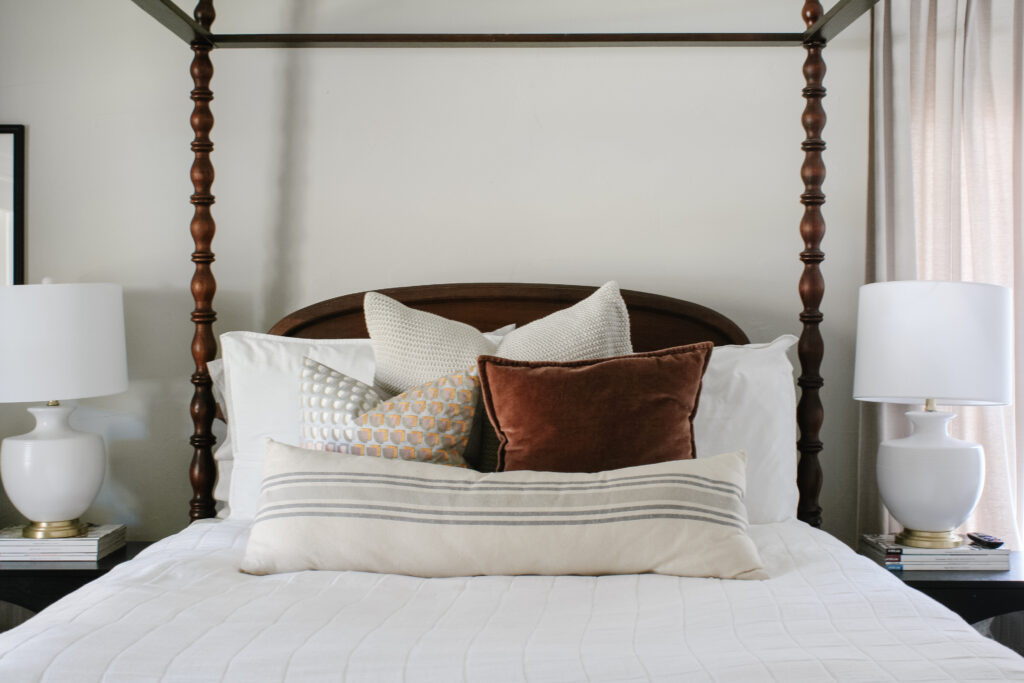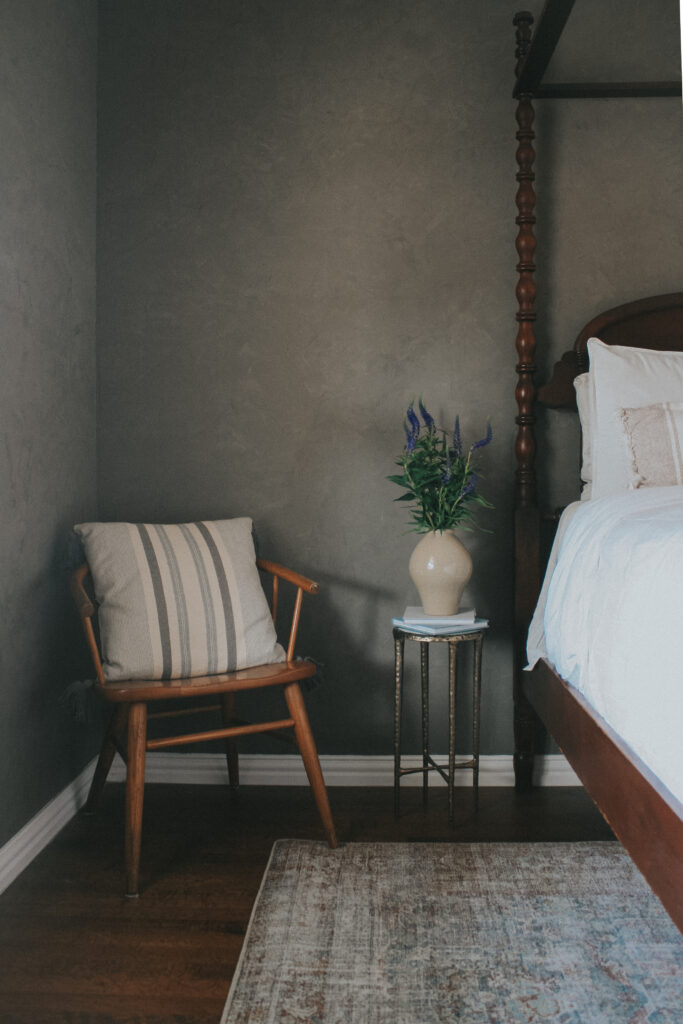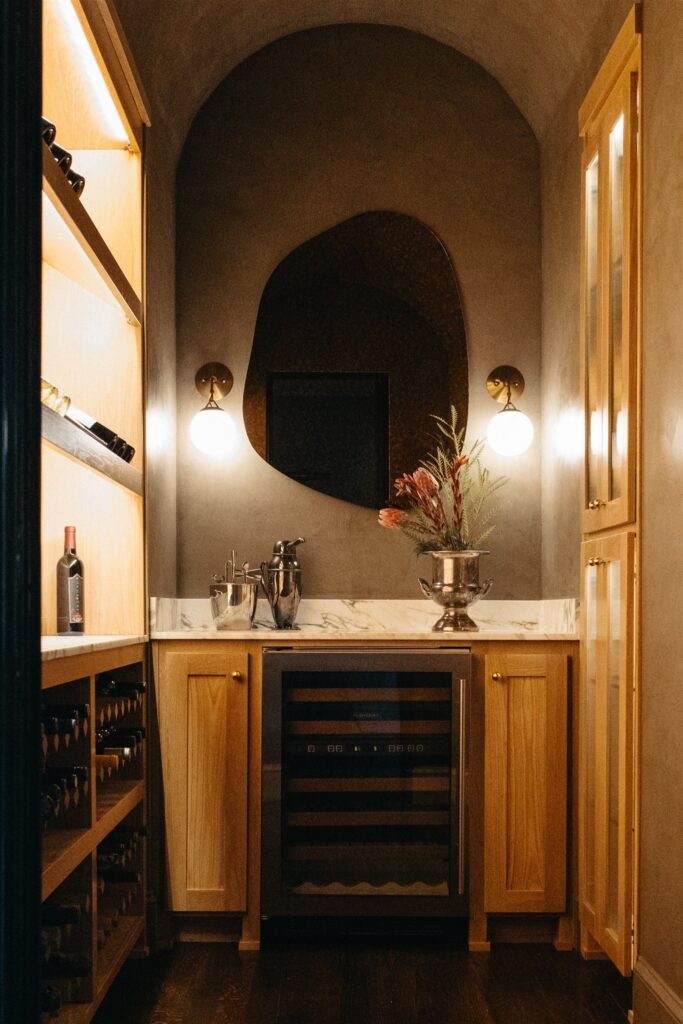HMD specializes on renovation projects that honor the home's character while adding a modern interpretation.
Explore The Blog
Home Rennovations
Do-It-Yourself
Home Styling
Favorite Things
Case Studies
The Ultimate Guide to Roman Clay
Gray walls may be safe but don’t you want more for your home?
Co-founder of The Expert and AD100 designer, Jake Arnold, stated in an interview with the Evening Standard “true luxury is making your senses feel good: lighting, music, touch smell… It’s not the Nineties when it was all the bigger, the better. Houses now are about quality, warmth and richness.”
Interior design has cycles and trends just like fashion but currently, we are seeing a purism of embracing natural elements within the industry. While gray is a neutral palette for walls, it is generally lacking in warmth and richness.
Today I’m sharing how we transformed our guest bedroom from a gray, blank-slate to a warm sanctuary through the technique of Roman Clay.

Why Roman Clay is growing in popularity in the design community.
Why is “warmth” an essential element for a completed room?
It touches the senses and makes all who enter want to stay. Have you ever seen pictures of ultra-modern spaces that feel cold from all the metal or empty space? It gives a distinct perspective, but I’d argue it’s not a place you want to curl up and read a book.
Warmth can be added to a space through textures, natural materials (like wood or marble), and colors that has origins in nature. This is why I predict you will see more Roman Clay and limestone in designed homes in the years to come.
According to manufacturer and distributor, Portola Paints, “Roman Clay provides a versatile finish able to achieve a wide range of stone, stucco and marble-like effects, making it a perfect fit in both traditional and contemporary settings.”
Roman Clay helps achieve an effect on walls that brings extra interest to the room and the quintessential essence of warmth.
How to source and apply Roman Clay
I used Portola Paints but there are other companies that provide similar finishes – BioShield Paint Company & SureTex Concrete Coating which is touted by Leanne Ford from Restored by the Fords on HGTV. What I like most about Portola is that they mix the product for you once the order is placed. This does slightly extend the lead time and if you live in a cooler region, there is a risk of product freezing in transit.
Portola’s site has a large variety of colors and a $10 sample jar is available in each variant. I highly recommend utilizing the samples as any paint will slightly differ in color from a computer screen. After distinguishing the right shade, ordering requires filling out an order form. My paint took about 2-3 weeks to deliver after talking with the procurement team.
Then comes the fun part – application!
Before jumping into the project, applying a primer is recommended. Any interior primer works and pro tip – use a tinted primer that’s close in color to your finish. This ensures you won’t have white poking through your application or leave you in need of a third coat of clay (which is a HUGE time saver).

While it may seem like texture on the walls wouldn’t matter because you’re applying a clay, the process actually requires smooth walls. The Roman clay is applied with a putty knife so any texture on the walls results in differing thicknesses that dry unevenly.
After priming my surface, I’d use a smaller putty knife to load a line of Roman clay on my 6″ wide putty knife. Then I would spread the material on the walls in an x-motion until a thin coat remained. The longer I practiced this motion, not only did I became quicker but was also able to control the application thickness by the degree the knife was held against the wall. This helped me disguise areas that still had slight texture in the drywall.
My walls took one coat of tinted primer and two coats of Roman clay. The first coat of clay is deceptive as it shows a lot of movement but the second coat brings extra coverage and makes the movement feel like a patina you’d find in a historic Spaniard building.
There is a top coat that can be added to the Roman clay that adds some protection and sheen. This is required in rooms that receive a lot of moisture like bathrooms or kitchens. Since I applied the Roman clay in a bedroom, I actually like the matte look and opted out of the top coat.
This does make the walls more susceptible to oil stains but it’s no different than a flat paint that can be easily touched up.
Roman Clay Before & After Pictures
Below is where we started with our guest room. It wasn’t a bad space but I wanted a finish that would bring more warmth and complemented the form of the bed.

Another benefit of using Roman clay is all the colors feel so natural. This makes the walnut color of our four poster bed feel rich and less contrasted.

Roman Clay is Having a Moment
While Roman clay may initially make you think of faux finishing that was all the rage back in the 90’s, the sophisticated finishes that are now achievable through these specialty paints instantly give any space high-end character.
Below is an image from a wine cellar we renovated for a client using roman clay as well.

As a designer, I love that we are seeing walls utilized as more than just a backdrop. Between wallpaper and specialty paints, there are so many opportunities to make your space feel uniquely curated. What are some of your favorite wall treatments you’ve seen or used in your own home?
Sincerely,
HMD
This quarterly newsletter is our avenue to share home items we’re loving, tips and tricks we utilize to elevate our designs and the latest client homes we’re curating